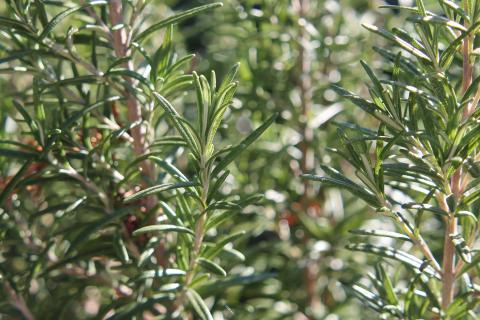Rosemary is a perennial evergreen shrub with blue flowers. It is an aromatic and distinctive herb with a sweet, resinous flavor. Here’s how to grow your own rosemary plants!
About Rosemary
Hailing from the shores of the Mediterranean Sea, rosemary does best in warm areas with fair humidity, where it can grow into a shrub several feet in height. In fact, rosemary grows so vigorously in ideal conditions that it can become a bit of a burden if not managed properly!
This herb can be grown outdoors as a perennial shrub in Zones 7 and warmer. In colder areas, it should be kept in a pot and brought indoors for the winter.
Rosemary is often used for seasoning poultry, lamb, stews, and soups.
When to Plant Rosemary
- Rosemary can be grown from seed, but germination rates are generally quite low and seedlings are slow to grow. Therefore, it’s strongly recommended to start new rosemary plants from cuttings taken from established plants. Cuttings grow quickly in good conditions and should be ready for outdoor planting in about 8 weeks.
- For a head start, plant the seeds or cuttings indoors 8 to 10 weeks before the last spring frost. (See your local frost dates.)
- Note: Seeds can take a long time to germinate (2 to 3 weeks), so don’t give up right away!
Choosing and Preparing a Planting Site
- Plant in full sun.
- The planting site should have well-draining soil. Rosemary won’t tolerate being consistently wet.
- Be sure to give your plants enough room to grow. Once established, rosemary can eventually grow to about 4 feet tall and spread about 4 feet as well.
- In the garden, plant near beans, cabbage, carrots, and sage. Learn more about companion planting with herbs.
How to Plant Rosemary
- Plant seeds/cuttings in well-drained soil. For best growth, the soil temperature should be around 70ºF (21°C).

How to Grow Rosemary
- Water rosemary plants evenly throughout the growing season, but be careful not to overwater.
- Prune regularly so that plants won’t get lanky.
- For fresh rosemary in the winter, grow the plant indoors in a pot (or take a cutting from an outdoor plant and keep a second indoors). Be sure to put it in bright light and protect it from cold drafts.
- Rosemary that’s grown in the ground does not transplant to containers well, so consider growing it in a container that can be brought inside during the colder months.
- Be sure to get cuttings or divide the plant for next season if it won’t survive winter in your area.
- Aerial blight
- Bacterial leaf spots
- Several types of root rot
How to Harvest Rosemary
- Snip off stems to use fresh, or hang them in the kitchen for dried rosemary.
- During the winter, bring potted rosemary plants inside. Learn how to overwinter rosemary indoors.
- Harvest young stems and leaves for the freshest taste.
- Harvest up to a third of the rosemary at any one time, allowing the plant to replace its growth before taking more.

How to Store Rosemary
- Air-dry sprigs of rosemary and store in an airtight container in the cupboard.
- Rosemary tea is said to enhance one’s memory. Alternatively, wear a sprig of rosemary in your hair to improve your memory.
- In the language of flowers, rosemary symbolizes remembrance.
- A sprig of lavender or rosemary under your ironing board cover will release its fragrance with the heat.
See the Many Uses of Rosemary
Enjoy this video showing the rosemary plant—and its many uses as a helper in the garden, kitchen, and healing home!




